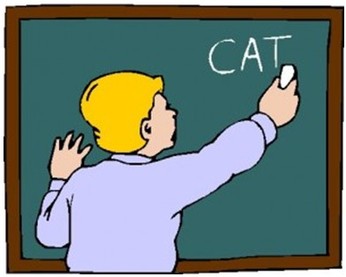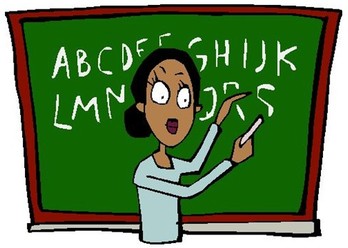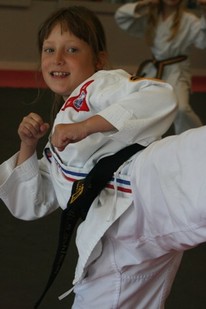 As your students learn sounds, get them BLENDING!
As your students learn sounds, get them BLENDING! Okay… Let’s say your kids know their letters and sounds already. Or maybe they just know a few of them but will soon know many more. What should you do next?
As soon as your kids know enough letters and sounds to make a few words, it’s time to get them blending! Let’s say they know the letters t, o, and p (the first three letters introduced in the Kinders Can! READ and WRITE! program). Put the letters together to make as many regular consonant-vowel-consonant words as possible — top, pot, pop, tot. Then show your kids how to use the letter sounds they have learned to sound out the words at hand. In other words, teach them how to blend these letter sounds together to make real words!
Your goal when teaching your kids to blend sounds together should be to help them “hear” the word as they make the letter sounds. I like making the first sound on its own, emphasizing and dragging out the middle sound/vowel, and quickly (and a bit more quietly) adding on the ending sound so that it attaches itself to the middle sound. Then I hook the beginning sound onto the rest.
When first teaching kids to blend, I typically ask them to use this blending technique three times in a row before actually blending the word together. This not only helps them hear the word, but map this crucial information in their brains as well.
To be clear, when sounding out the word “top”, we would go, /t/,/oooo/p/ … /t/, /oooo/p/ … /t/, /oooo/p/ … /top/. Then I would ask them to use the word in a sentence, making sure they understood the word they said aloud.
As soon as your kids know enough letters and sounds to make a few words, it’s time to get them blending! Let’s say they know the letters t, o, and p (the first three letters introduced in the Kinders Can! READ and WRITE! program). Put the letters together to make as many regular consonant-vowel-consonant words as possible — top, pot, pop, tot. Then show your kids how to use the letter sounds they have learned to sound out the words at hand. In other words, teach them how to blend these letter sounds together to make real words!
Your goal when teaching your kids to blend sounds together should be to help them “hear” the word as they make the letter sounds. I like making the first sound on its own, emphasizing and dragging out the middle sound/vowel, and quickly (and a bit more quietly) adding on the ending sound so that it attaches itself to the middle sound. Then I hook the beginning sound onto the rest.
When first teaching kids to blend, I typically ask them to use this blending technique three times in a row before actually blending the word together. This not only helps them hear the word, but map this crucial information in their brains as well.
To be clear, when sounding out the word “top”, we would go, /t/,/oooo/p/ … /t/, /oooo/p/ … /t/, /oooo/p/ … /top/. Then I would ask them to use the word in a sentence, making sure they understood the word they said aloud.




 RSS Feed
RSS Feed
